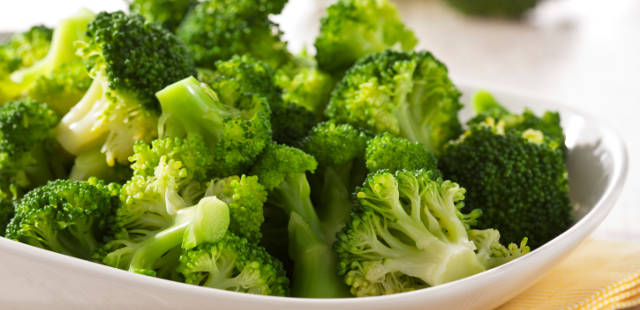
A small study led by investigators at Massachusetts General Hospital for Children (MGHfC) and Johns Hopkins University School of Medicine has found evidence that daily treatment with sulforaphane – a molecule found in foods such as broccoli, cauliflower and cabbage – may improve some symptoms of autism spectrum disorders.
In their report, published in the Proceedings of the National Academy of Sciences (PNAS), the investigators describe how participants receiving a daily dose of sulforaphane showed improvement in both behavioral and communication assessments in as little as four weeks, though they note that further studies are needed to evaluate sulforaphane’s therapeutic benefit for children with autism.
Autism is a developmental disability characterized by problems with social, emotional and communication skills, as well as repetitive and routine behaviors. Onset usually occurs before the age of 3 years, and the disorder is almost five times more common among boys than girls.
According to the Centers for Disease Control and Prevention (CDC), autism is the fastest growing disability in the US, with the prevalence of the disorder increasing 289.5 percent over the past 12 years. Currently, more than 3.5 million Americans, or 1 in 68 children, are living with autism.
At present, there are no medications that can treat the core symptoms of autism. But in this latest study, scientists found that sulforaphane may work to reduce certain behavioral symptoms of the disorder by targeting underlying cellular problems.
Sulforaphane boosts body’s heat-shock response
Sulforaphane is a chemical found in a number of vegetables, including broccoli, broccoli sprouts, cabbage, cauliflower and Brussels sprouts. The chemical is most commonly associated with its cancer-fighting properties: through a series of epigenetic mechanisms, sulforaphane helps to maintain proper cell function and is believed to reduce the risk of cancers of the prostate, skin, breast, and other sites. Additional research suggests that the chemical may also be a key player in preventing the development of arthritis.
Dr. Paul Talalay, co-author of this latest study and a professor of pharmacology and molecular sciences at Johns Hopkins, and colleagues first discovered the disease-fighting properties of sulforaphane in 1992, finding that it could boost the body’s defenses against oxidative stress, inflammation and DNA damage.
But what’s more, the researchers later discovered that sulforaphane can also enhance the heat-shock response in the body–a series of events that protects cells from damage caused by high temperatures, such as when a person has a fever.
Around half of parents of children with autism say their child’s behavioral symptoms significantly improve when they have a fever, leading the scientists to wonder if sulforaphane could be used to induce a heat-shock response to reduce symptoms in individuals with autism.
Comparing sulforaphane from broccoli sprouts with a placebo
For their study, the team enrolled 40 adolescents and young men aged 13-27 who had moderate to severe autism. Of the participants, 26 were randomly assigned to receive a dose of sulforaphane (9-27 mg dependent on their weight) once a day, which was extracted from broccoli sprouts, while 14 participants were assigned to received a daily dose of a placebo.
The researchers note that the participants, their family and the study team did not know what treatments each subject was receiving.
At 4, 10 and 18 weeks after treatment started, a number of autism-related behaviors were measured in the participants using the Aberrant Behavior Checklist, the Social Responsiveness Scale and the Clinical Global Impression scale. Treatment was stopped at 18 weeks.
Behavioral improvements from sulforaphane ‘so noticeable’
Just 4 weeks into the treatment, the team found that many of the participants who received sulforaphane had already started to show improvements in behavioral symptoms; these improvements continued until treatment ceased. By 18 weeks, participants who received sulforaphane saw their scores on the Aberrant Behavior Checklist reduce by 34 percent, while scores on the Social Responsiveness Scale reduced by 17 percent.
Study co-author Dr. Andrew Zimmerman, a professor of pediatric neurology at the University of Massachusetts, says the improvements they observed were remarkably powerful, though not entirely surprising:
“When we broke the code that revealed who was receiving sulforaphane and who got the placebo, the results weren’t surprising to us, since the improvements were so noticeable.
The improvements seen on the Social Responsiveness Scale were particularly remarkable, and I’ve been told this is the first time that any statistically significant improvement on [this scale] has been seen for a drug study in autism spectrum disorder.”
Furthermore, assessments using the Clinical Global Impression scale revealed that 46 percent of participants who received sulforaphane showed noticeable improvements in social interaction, 54 percent showed improvements in aberrant behaviors – such as irritability, awareness, repetitive movements, hyperactivity and motivation – while 42 percent showed improvements in verbal communication.
The researchers stress, however, that a third of patients had no behavioral improvements with sulforaphane, and therefore the compound needs to be tested in a larger sample of individuals with autism – something the team hopes to do soon.
“Ultimately we need to get at the biology underlying the effects we have seen and study it at a cellular level,” says Dr. Zimmerman. “I think that will be done, and I hope it will teach us a lot about this still poorly understood disorder.”
